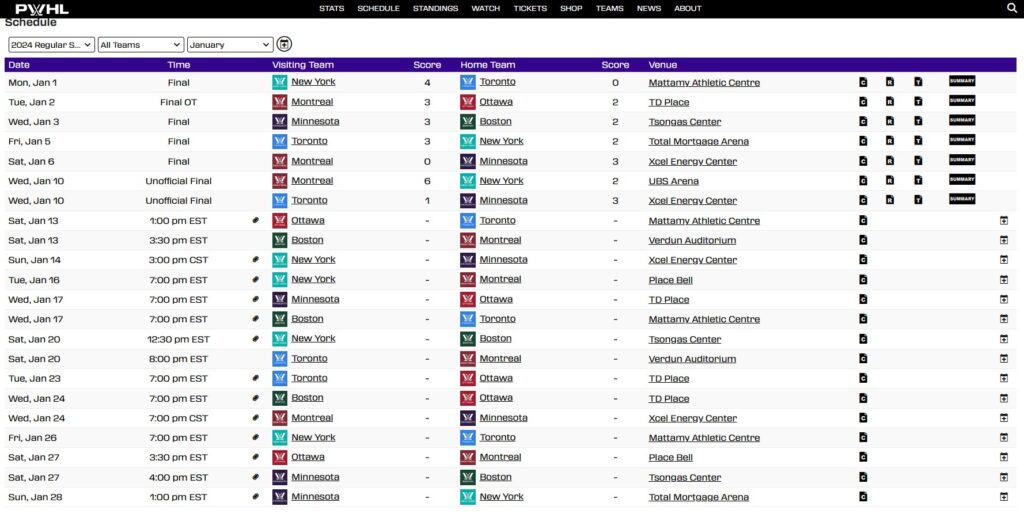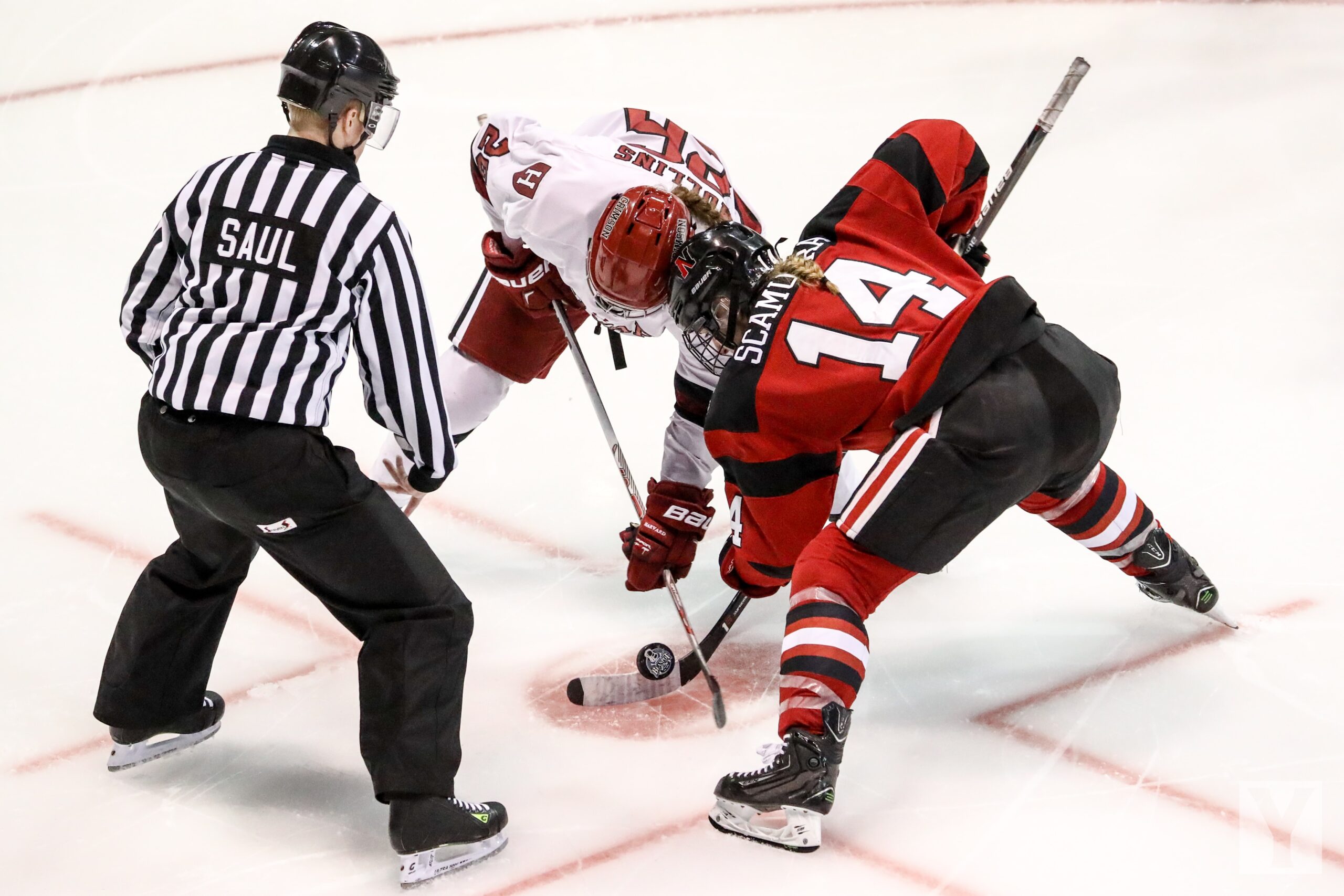After years of leagues beginning and folding, professional teams trying and failing, and the unsustainability of different leagues throughout North America, it seems the beginning of a new and, more importantly, durable Professional Women’s Hockey League (PWHL) has finally begun.
The PWHL is the first of its kind in women’s hockey. Similar to the ways of women’s soccer and women’s basketball, there were many leagues prior to the PWHL, paving the way towards this current league’s projected success. The Canadian Women’s Hockey League, the Premier Hockey Federation, and the National Women’s Hockey League all have tried and failed to create an environment for professional female hockey players to succeed. The difference between PWHL and its predecessors? Compensation and resources.
The PWHL conjoins hockey teams in the United States and Canada, three from both countries to create a six-team, 138-player league that meets the proper professional standards. Backing the league are some high hitters, including Mark Walter, controlling owner of the Los Angeles Dodgers, his wife, Kimbra Walters, attorney and career philanthropist, and Billie Jean King, former world number-one tennis player and advocate.
Before the league officially came together to recruit players, its organizers put forth the makings of a collective bargaining agreement, something many of the professional hockey players were never offered before, and a livable salary with benefits to present. The full CBA can be read on here; however, the key terms ensure that a maximum of nine players per team can be paid the minimum salary of $35,000 (about $1,400 per game), which will increase by 3% each contractual year, and an average salary of $55,000 which will differentiate based of player performance.
“These performance-based salaries and the entire CBA means the world for women’s hockey,” says Ariel Vuolo, 23, former female hockey player of Commack. “I’m excited to see where this league will go and how much it will grow as the season goes on.” Vuolo was injured playing hockey in her teenage years, however she believes that if she was aware there may be a career option in professional hockey, she would have made training and recovery a bigger priority, possibly going on to the college level.
“The PWHL will give motivation to young female hockey players. As much as I wish I had that five years ago, I’m happy to see they have that inspiration and potential,” Vuolo adds.
The first week of the season spoke for itself as history was made through multiple records broken and league firsts set. The first game of the league was on New Year’s Day between New York and Toronto. New York proudly took the win, four to zero. Ottawa hosted Montreal the following day resulting in Montreal’s tight win after final overtime. The game had a record-breaking 8,000 fans watching. In the following days three more games took place throughout the United States, most recently Minnesota taking the win over Montreal. Although that 3-0 win was rewarding, the record set by the Minnesota fans that night was the true trophy. Minnesota hockey fans flooded the Xcel Energy Center, making the 13,000-fan turnout the largest live audience to watch a professional women’s hockey game in history, breaking that record twice in four days. The consistently increasing audience record means great things for the league, and the sport as a whole.
For reference, the NHL’s average spectator count is 17,000. While this comparison may seem degrees higher, it is important to note that with a total of 6 teams six in the league, three in the United States and three in Canada, it is more difficult for women’s hockey fans to attend these games live. 13,000 spectators in Minnesota are more than expected by many league officials, players, and even spectators themselves.
The PWHL New York team has two “home” arenas available to them. Their first home game was played at the Total Mortgage Arena in Bridgeport, Connecticut, and second home game was played at the UBS Arena right here on Long Island. Attendance in New York has been low with the Connecticut game coming in at 2,000 spectators, a fraction of those in Minnesota and Ottawa. However, with two “home” arenas, both the team and the league have high hopes. “We are able to maximize our visibility across the tri-state area and bridge three different markets – Connecticut, New York City and Long Island,” said Amy Scheer, PWHL senior vice president of business operations told The New York Times, making the team “unique in its ability to reach a larger potential fan base.”
New York’s team was not considered to be a huge threat before the season started, however their first game proved they have a fighting chance with a stocked roster.
Scoring the league’s first-ever goal for New York was Ella Shelton, 2022 Olympic gold medalist, in the first period. Also scoring for New York in the first game of the league was Alex Carpenter, a two-time Olympic silver medalist and alternate captain of the team, Kayla Vespa, and Jill Saulnier.
Corinne Schroeder, 24, originally from Elm Creek, Canada, was New York’s MVP of the game after making 16-saves, shutting out Toronto completely.
The PWHL seems to have a bright future ahead of it. League games are available to watch on multiple platforms throughout the U.S., including SportsNet, MSG, and NESN and streaming on YouTube.










